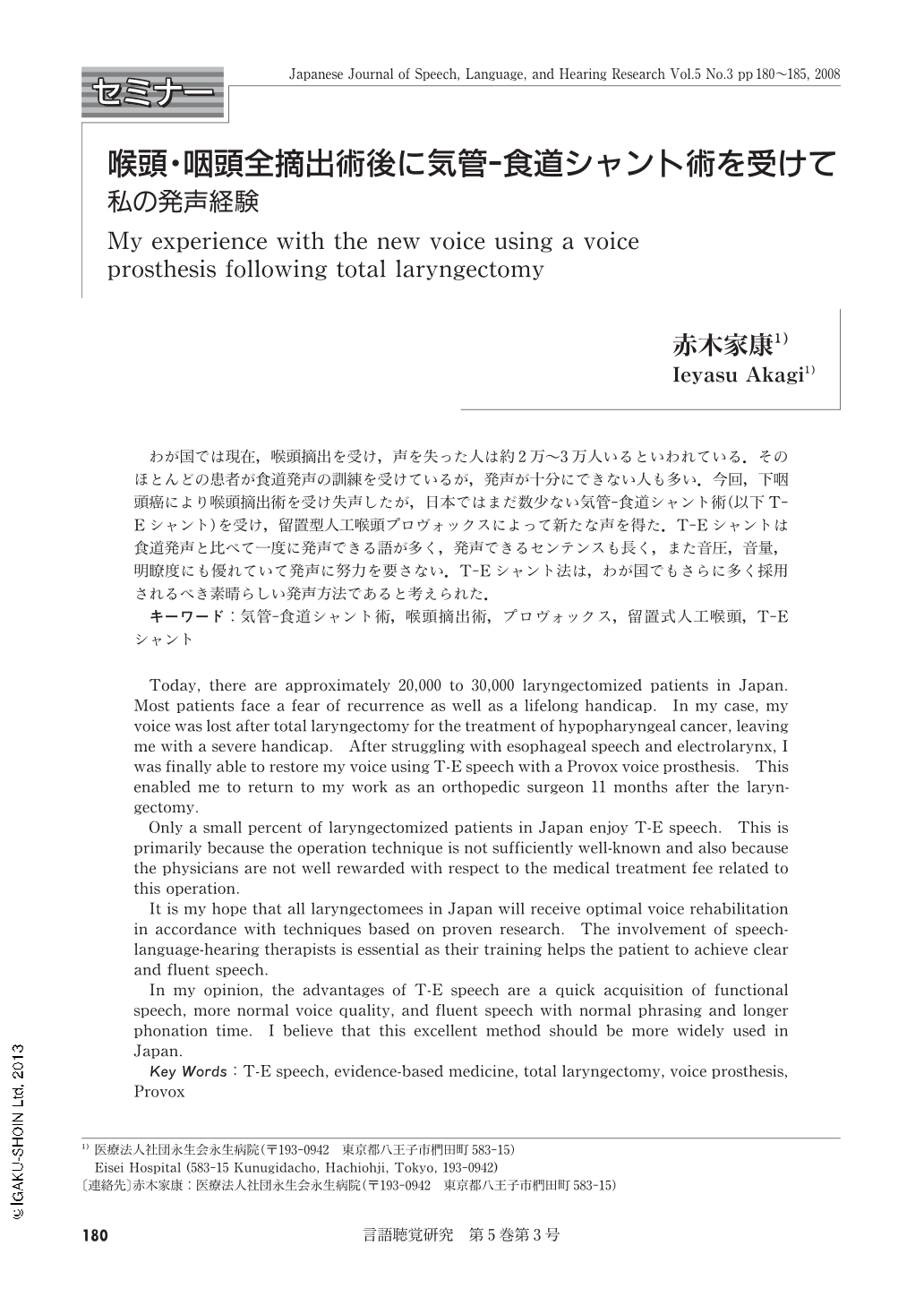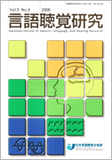Japanese
English
- 有料閲覧
- Abstract 文献概要
- 1ページ目 Look Inside
わが国では現在,喉頭摘出を受け,声を失った人は約2万~3万人いるといわれている.そのほとんどの患者が食道発声の訓練を受けているが,発声が十分にできない人も多い.今回,下咽頭癌により喉頭摘出術を受け失声したが,日本ではまだ数少ない気管-食道シャント術(以下T-Eシャント)を受け,留置型人工喉頭プロヴォックスによって新たな声を得た.T-Eシャントは食道発声と比べて一度に発声できる語が多く,発声できるセンテンスも長く,また音圧,音量,明瞭度にも優れていて発声に努力を要さない.T-Eシャント法は,わが国でもさらに多く採用されるべき素晴らしい発声方法であると考えられた.
Today, there are approximately 20,000 to 30,000 laryngectomized patients in Japan. Most patients face a fear of recurrence as well as a lifelong handicap. In my case, my voice was lost after total laryngectomy for the treatment of hypopharyngeal cancer, leaving me with a severe handicap. After struggling with esophageal speech and electrolarynx, I was finally able to restore my voice using T-E speech with a Provox voice prosthesis. This enabled me to return to my work as an orthopedic surgeon 11 months after the laryngectomy.
Only a small percent of laryngectomized patients in Japan enjoy T-E speech. This is primarily because the operation technique is not sufficiently well-known and also because the physicians are not well rewarded with respect to the medical treatment fee related to this operation.
It is my hope that all laryngectomees in Japan will receive optimal voice rehabilitation in accordance with techniques based on proven research. The involvement of speech-language-hearing therapists is essential as their training helps the patient to achieve clear and fluent speech.
In my opinion, the advantages of T-E speech are a quick acquisition of functional speech, more normal voice quality, and fluent speech with normal phrasing and longer phonation time. I believe that this excellent method should be more widely used in Japan.

Copyright © 2008, Japanese Association of Speech-Language-Hearing Therapists. All rights reserved.


